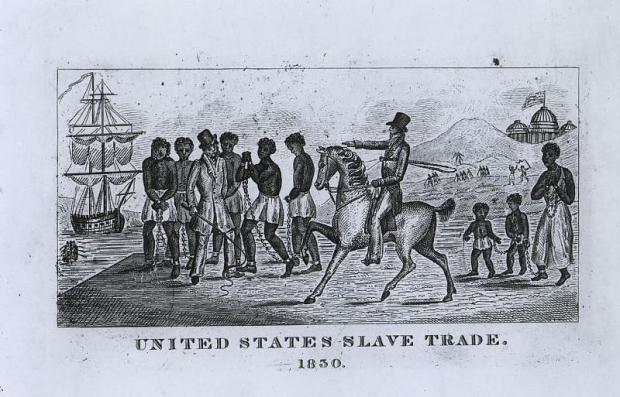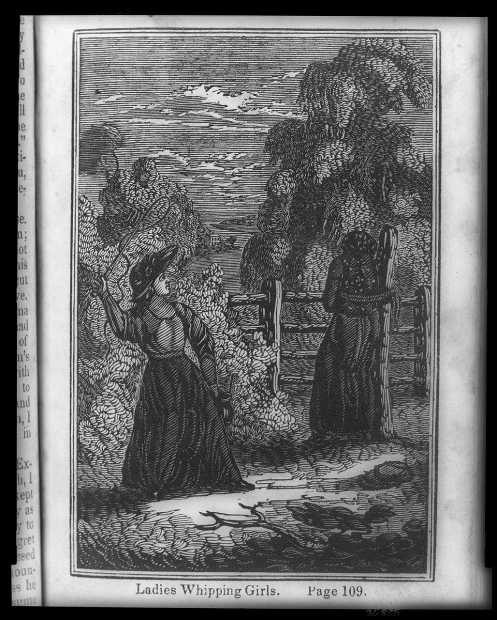
Switches, Whips and Chains-The handtools of American Slavery (Image Courtesy of Smithsonian Museum of American History)
IN the tidal wave of commentary washing over the country since Minnesota Vikings star running back Adrian Peterson was indicted after reportedly using a switch on his four-year old son, a number of commentators have commiserated, revealing similar treatment in their own childhoods. A few athletes, such as NBA star Charles Barkley, have asserted that what Peterson had done was a familiar part of their cultural upbringing.
“Whipping. We do that all the time. Every black parent in the South is going to be in jail under those circumstances,” Barkley told interviewer Jim Rome on CBS’ “NFL Today” on Sunday, September 14.
But where did generations of African-Americans, especially in the South, learn to use a switch? Anyone familiar with the literature of slavery in the United States will be familiar with switching. Fredrick Douglass, for instance, vividly described the method when, as a teenager in 1833, he was the property of a Mr. Covey:
“He then went to a large gum-tree, and with his axe cut three large switches, and after trimming them up neatly with his pocket-knife, he ordered me to take off my clothes…Upon this he rushed at me with the fierceness of a tiger, tore off my clothes, and lashed me till he had worn out his switches, cutting me so savagely as to leave the marks visible for a long time after…. During the first six months of that year, scarce a week passed without his whipping me.”[1]
Of course, Frederick Douglass’s treatment at the hands of Covey was far from unique. Witness this young runaway’s recollection of life as an enslaved child.

“A white woman whipping a slave girl.” (Library of Congress Rare Book and Special Collections Division Washington, D.C. 20540 USA)
“Mistress was very strict, and if we did not do every thing exactly to please her we were sure to get a whipping. An old man whipped us on our bare flesh with hickory switches. A school-master named Cleeton, boarded with her, and used to bring home a great many of them and put them in the chimney to dry. He called them ‘nice switches to whip the little niggers with.’ A good many of us were entirely naked and the rest had nothing on but shirts. I never wore any clothes till I was big enough to plough. When they whipped us they often cut through our skin. They did not call it skin, but ‘hide.’ They say ‘a nigger hasn’t got any skin.’ “[2]
In the full spectrum of cruel punishments and discipline meted out to enslaved people, of course, switching would rank towards the less fatal end of the scale –one reason it was used frequently on children, no doubt. To teach them a good lesson. And the degrees of severity of punishment and discipline went up with the severity of the offense. Severed toes and ears for repeat runaways. Branding and scarring. Execution and heads-on-pikes for insurrection. And, of course, the ever-present lash, as anyone who seen 12 Years a Slave must know.
While touring through the South in 1854, famed architect and social critic Frederick Law Olmsted witnessed the severe whipping of a young enslaved woman at the hands of an overseer.
“The screaming yells and the whip strokes had ceased when I reached the top of the bank. Choking, sobbing, spasmodic groans only were heard. I rode on to where the road, coming diagonally up the ravine, ran out upon the cotton-field. My young companion met me there, and immediately afterward the overseer. He laughed as he joined us, and said: ‘She meant to cheat me out of a day’s work, and she has done it, too.’ “ [3]
The point is that the tradition of “switching” –American Heritage defines it as “Chiefly U.S. Southern” –is a vestige of American antebellum slavery, a brutal form of power and punishment exerted by the strong over the weak, the powerful over the powerless. For centuries, the enslaved people of this country knew the switch, the lash, the cat-o-nine tails and worse. That was what made a “good” slave. That was how a human being was broken.
It is surprising that in nearly all of the recent discussion of “switching,” this “parenting technique” has not been recognized for what it is — a sad, ugly remnant of the violent maelstrom that was American slavery. This brutality against the powerless is not some biblical rod applied to keep children from being “spoiled.” It is the cruel aftermath of a system of inhuman treatment that flowed down through generations.
“We have descriptions,” wrote David Brion Davis in a history of New World slavery, “of slave children pretending to be drivers or overseers, whipping one another.” [4] (Emphasis added)
Switching is by no means peculiar to African-Americans. Whipping and beating children knows no bounds of color or creed. But carry that idea down over centuries. Children pretending to whip one another. Fathers switching sons. Grandmothers switching their charges –just as they and generations before them had been switched to teach them a lesson. The violence of slavery moving to the post-Civil War era and the Klan’s murderous beatings and burnings. Generations learning that violence was the means of exerting power.
Perhaps if more people, especially those in the African–American community, understood that “switching” is merely a short step in history from the bondsman’s lash or lynching, we might view this form of punishment for what it is.
NOTES:
[1] Frederick Douglass, Narrative of the Life of Frederick Douglass. New Haven: Yale University Press, 2001, p. 47.
[2] Recollections of Slavery by a Runaway Slave (journal title) The Emancipator A Runaway Slave 5 p. August 23, September 13, September 20, October 11, and October 18, 1838 Call number Microforms Serial 1-1308 (Davis Library, University of North Carolina at Chapel Hill
[3] Olmsted, Frederick, Law, (Arthur M. Schlesinger ed.), The Cotton Kingdom (1953); Nevins, Allan, Ordeal of the Union (1947);
Life on a Southern Plantation, 1854″, EyeWitness to History, www.eyewitnesstohistory.com <http://www.eyewitnesstohistory.com/> <http://www.eyewitnesstohistory.com> <http://www.eyewitnesstohistory.com/> (2005)
[4] David Brion Davis, Inhuman Bondage. New York: Oxford, 2006, p. 199.